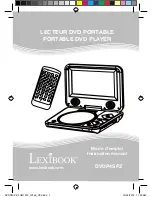
26
Appendix B: Supplement for Boats using a Push Button or Rocker Switch for Engine
Starting (including Boats with Multiple Engines)
NOTE:
The PLC inside the KSM needs power (approximately 2.5 amps) from a source, such
as a key switch, that provides power only when the boat is in operation. Consider
this additional 2.5 amps of power and how it may affect the reliability of the source.
This new circuit should be protected with a 5-amp fuse or circuit breaker per ABYC
standards, and it should in no way affect the integrity of the engine’s starting or
running operation.
The Double Pole Single Throw (DPST) switch used in the starting circuit (each engine’s
starting circuit) fulfills the requirement to keep each engine starting independent and isolated
to just that one particular engine. One side (circuit) of that DPST switch simply provides the
same function as the existing push button or rocker start switch on the vessel. There is no
change to functionality. The other side (circuit) of the DPST switch turns on the capacitor
providing power to the engine’s (vessel’s) electrical circuit regardless of lead-acid battery
condition. The capacitor, the KSM circuit, does not actually engage the starter motor. The
original OEM circuit does that, just as it normally would. All the KSM is doing is making sure
there is power available. After the engines start, the KBI KSM PLC senses the engine has
started (via voltage from Pin 4) and takes over control of the KSM circuit and recharges the
unit. In order to ensure the PLC does not receive a false positive error when the next engine
is started, a cube relay inside the KSM interrupts PLC power supply, causing the PLC to
reset. See theory of operation on pages 13 and 18.
The PLC inside the KSM needs power from a source that provides power only when the
engine is running. See Figures B1, B2, B3, and B4.
Summary of Contents for KSM
Page 10: ...10 Figure 2 Typical Cable Installations ...
Page 11: ...11 Figure 3 Six 6 Cell KSM ...
Page 12: ...12 Figure 4 Ten 10 and Twelve 12 Cell KSM ...
Page 17: ...17 Figure 7 Standard MKSM Schematic ...
Page 23: ...23 Figure A1 Typical Cable Installations ...
Page 25: ...25 Figure A3 Schematic Alternate Source for Start Signal ...
Page 27: ...27 Figure B1 Typical Cable Installations ...
Page 29: ...29 Figure B3 Simplified Installation Diagram ...
Page 30: ...30 Figure B4 Standard DPST Install ...
Page 32: ...32 Figure C1 Typical Cable Installation ...
Page 33: ...33 Figure C2 Alternate Method ...












































